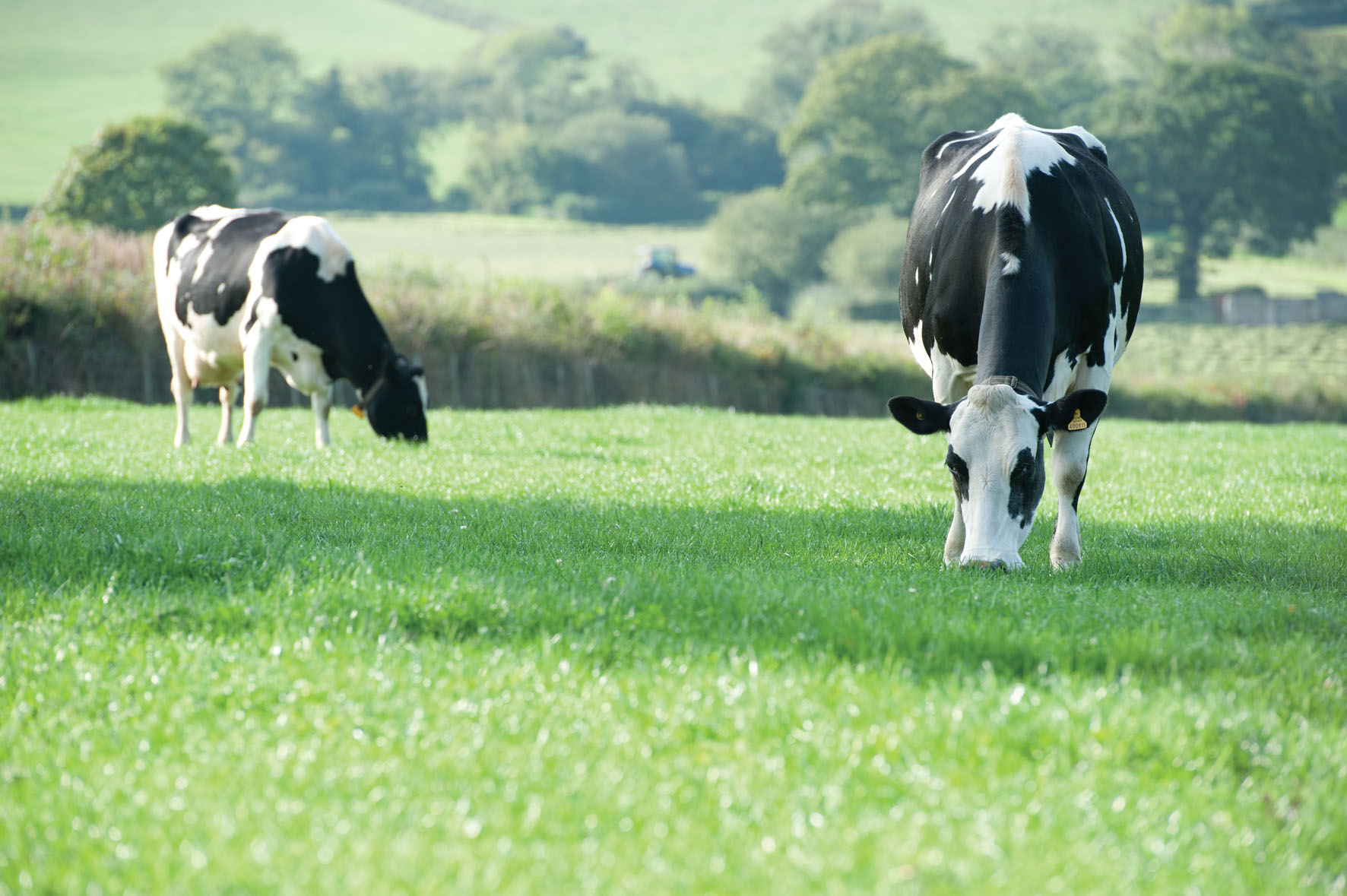Grazed grass is the most inexpensive feed available, but it is not a balanced feedstuff by itself as, whilst the energy density of grass is quite good, often in excess of
11.5 MJ/Kg DM, its nutrient analysis can vary substantially. This makes balancing grazing-based diets extremely difficult.
One of the major challenges is to accurately predict dry matter intakes of cows on grazed grass. Indeed, over estimating dry matter intake is one of the most common reasons for reduction in milk yield and constituents, and sub optimal fertility, during the early spring period.
Turnout
Once conditions allow, it is important to introduce cows to grass gradually over a period of at least 3 weeks to allow the rumen microbes to adjust to the change. Initially 4-5 kg DM of grass dry matter should be allocated - cows will comfortably eat this over a period of 3 hours.
Allow cows out to graze after morning milking, bringing them in again in the afternoon to eat the indoor ration. As the length of time cows are allowed to graze is extended, the indoor ration can be decreased accordingly. The key thing is not to under supply feed!
Issues with spring grass
Lush, leafy spring grass will often have a crude protein content in excess of 250g/ kg DM and this protein is mainly in the form of rumen degradable protein (RDP). The rumen microbes are unable to utilise all of this crude protein, particularly if they don’t have a sufficient amount of fermentable energy available to them. Excess RDP is broken down to ammonia in the rumen, absorbed into the blood stream and converted to urea in the liver. This can have an adverse impact on fertility and hoof health and can also result in a drop in milk yield.
Another challenge with good quality grazing swards is that they contain a high proportion of leaf to stem, resulting in relatively low fibre levels, which can be accompanied by sugar levels in excess of 12% during sunny warm weather.
SARA
Both these factors can combine to challenge rumen function and lead to the development of a condition called sub acute rumen acidosis, more commonly termed SARA. The rumen microbes rapidly ferment sugars and this fast fermentation leads to a large volume of volatile fatty acids being produced in a short space of time, which promotes a sudden drop in rumen pH to below 6.0. Once this happens rumen fermentation becomes sub optimal.
What’s more, good quality swards will often have NDF content below 400g/kg DM and this lack of effective fibre results in an absence of ‘rumen scratch factor’, which is essential to instigate ruminal contractions, cudding and the subsequent production of saliva. This saliva normally neutralizes the acidity in the rumen and maintains pH above the threshold of 6.0.
SARA is widely accepted as being a challenge for indoor herds but a study conducted by O’Grady et al in (2006) demonstrated that SARA can also be an issue in grazing herds. The study monitored rumen pH in 12 Irish grazing dairy herds that were fed an average of 2 kg of concentrate per day. The results indicated that 53% of cows had a rumen pH of less than 5.8 during the day and this pH is recognised as being sub optimal for efficient fibre digestion to take place. SARA at grass will limit feed intake. This will result in a reduction in milk yield, butterfat yield and will lead to excessive weight loss for cows in early lactation with potential consequences for herd fertility. It is often exacerbated by concentrate feeding in the milking parlour, where compounds contain high inclusions of rapidly degradable starch in the formulation.
Monitoring physical parameters such as rumen fill, dung consistency and rumination rates is key to identifying SARA at grass. Key things to monitor include:
- Cudding – more than 65% of the herd should be lying down cudding at any one time
- Dung consistency - loose dung with gas bubbles is indicative of a potential SARA issue
- Milk quality - a fall in butterfat or protein % of 0.3% or greater in one week is a warning signal for SARA.
Feeding Actisaf
Feeding Actisaf Sc 47 live yeast to dairy cows when they are being introduced to grazing and during the grazing season provides major advantages for a herd. By its mode of action Actisaf stimulates fibre digesting bacteria and lactic acid utilising bacteria. This has a twin effect of increasing feed conversion efficiency and, more importantly at grass, providing a buffering effect. Including Actisaf into the diet of cows during the transition to grass helps the rumen microbes adapt to the change in diet and lessens the potential drop in milk yield. Actisaf helps lactic acid utilising bacteria produce more propionate, which is essential for milk production, preventing bodyweight loss and promoting strong fertility.
Summary
Spring grass can be a cheap energy and protein source for dairy cows. To maximise the benefits and decrease the risks, it is essential to monitor cow yields, body condition, rumen fill and dung consistency. The biggest risks come from over predicting dry matter intakes from grass, excess protein and SARA. Be prepared to strategically buffer feed and to feed lower protein and lower starch compounds that contain higher levels of digestible fibre. Including Actisaf Sc 47 in the diet of grazing dairy cows increases the digestion and utilisation of grass while also buffering the rumen, which is essential to promote rumen health and function in your herd.

